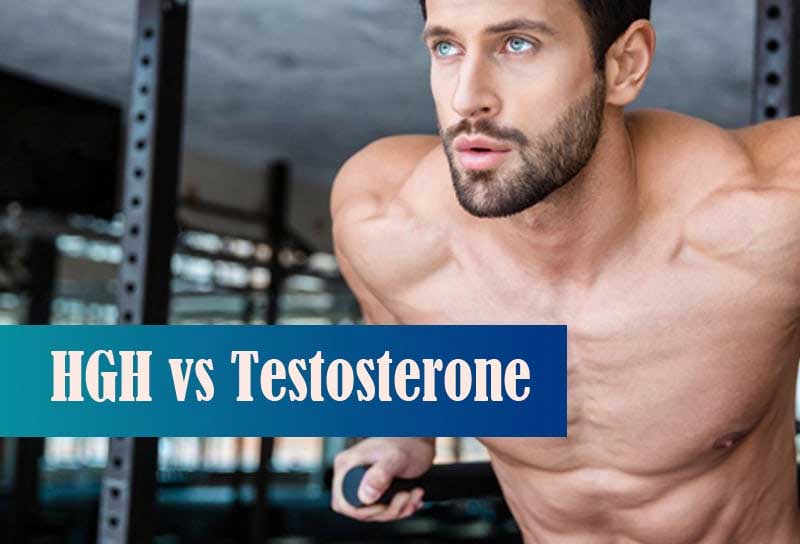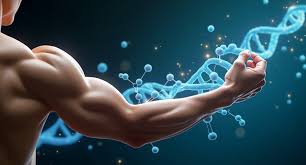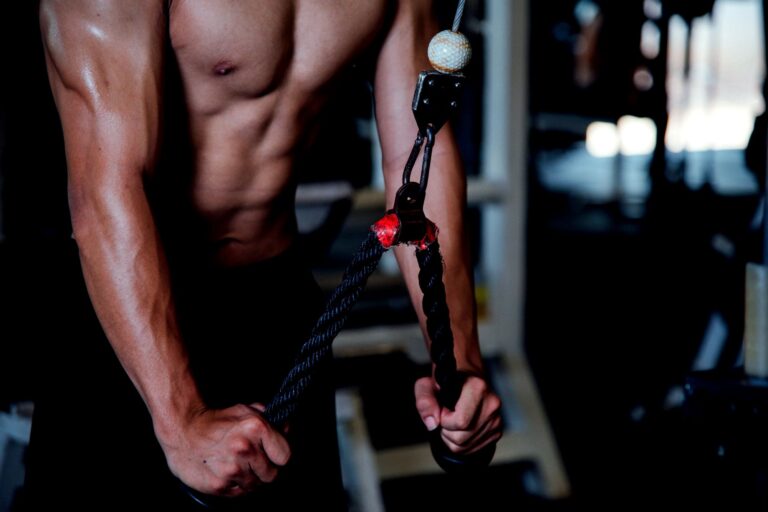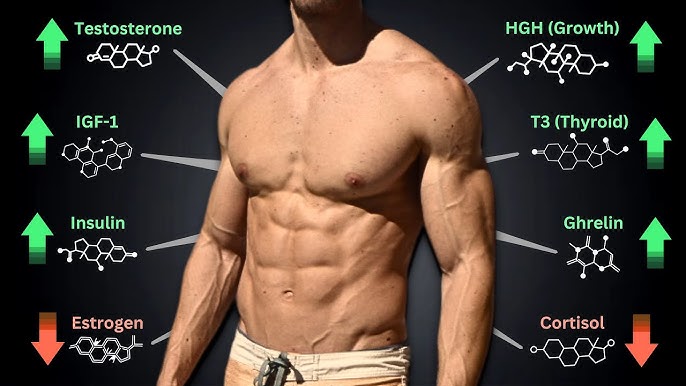When it comes to enhancing physical performance, increasing lean muscle mass, and accelerating fat loss, two powerful hormones consistently come up: Human Growth Hormone (HGH) and Testosterone. Both have profound impacts on the body, especially for individuals engaged in bodybuilding, high-level fitness training, or those undergoing hormone replacement therapy (HRT). But which one is truly superior when it comes to sculpting your physique and improving your fitness performance?
In this comprehensive guide, we will dive deep into the differences between HGH and Testosterone, compare their mechanisms, benefits, side effects, and how they influence fat metabolism and muscle development. Whether you’re considering HGH or Testosterone for fat loss, or exploring them for muscle building, this guide will help you make an informed decision.
- 1. What Is HGH?
- 2. What Is Testosterone?
- 3. Key Differences Between HGH and Testosterone (TRT)
- 4. HGH and Fat Loss: How It Works
- 5. Testosterone and Fat Loss: How It Works
- 6. HGH and Muscle Gain: Mechanism and Results
- 7. Testosterone and Muscle Gain: Mechanism and Results
- 8. Comparing HGH vs. Testosterone for Bodybuilding
- 9. Side Effects: HGH vs. Testosterone
- 10. HGH vs. TRT for Aging and Energy
- 11. Which One Should You Choose?
- 12. Stacking HGH and Testosterone: A Synergistic Option?
- 13. FAQs: HGH or Testosterone for Fat Loss and Muscle Gain
- 14. Final Thoughts
1. What Is HGH?
Human Growth Hormone (HGH) is a naturally occurring peptide hormone secreted by the pituitary gland. It plays a vital role in:
- Cell regeneration
- Muscle and bone growth
- Fat metabolism
- Tissue repair
- Maintaining healthy body composition
In fitness and medical circles, recombinant HGH is used to combat aging, accelerate recovery, and promote lean muscle gain. It’s also used clinically for growth hormone deficiencies.
2. What Is Testosterone?
Testosterone is a primary male sex hormone, though it’s also present in females in smaller quantities. It is responsible for:
- Male sexual development
- Muscle growth
- Fat distribution
- Bone density
- Mood and libido
In therapeutic settings, Testosterone Replacement Therapy (TRT) is used to treat low testosterone (Low T) in aging men or those with hypogonadism. It helps restore energy, increase muscle mass, and improve fitness performance.
3. Key Differences Between HGH and Testosterone (TRT)
| Feature | HGH | Testosterone (TRT) |
|---|---|---|
| Hormone Type | Peptide Hormone | Steroid Hormone |
| Produced By | Pituitary Gland | Testes (mainly) |
| Main Role | Cell growth & metabolism | Muscle mass & libido |
| Common Use | Anti-aging, fat loss, recovery | Muscle building, energy, libido |
| Delivery | Injections | Injections, gels, patches |
Understanding the difference between HGH and TRT helps set realistic expectations for outcomes and risks.
4. HGH and Fat Loss: How It Works
One of the most celebrated benefits of HGH is its ability to promote fat loss. HGH stimulates lipolysis, the breakdown of fat cells for energy.
Key Fat Loss Benefits of HGH:
- Targets visceral fat (fat around organs)
- Enhances metabolic rate
- Preserves lean muscle during caloric deficit
- Improves insulin sensitivity (in some cases)
This makes HGH for weight loss especially popular among those over 30, when natural HGH levels begin to decline.
5. Testosterone and Fat Loss: How It Works
Testosterone helps manage fat distribution and is essential in maintaining a lean physique. Low testosterone levels are linked to increased body fat and decreased metabolism.
Key Fat Loss Benefits of Testosterone:
- Inhibits fat cell formation
- Improves insulin sensitivity
- Boosts basal metabolic rate
- Increases motivation for exercise
TRT users often report reduced abdominal fat and improved body composition.
6. HGH and Muscle Gain: Mechanism and Results
HGH indirectly supports muscle growth by boosting IGF-1 (Insulin-like Growth Factor 1) levels, which enhance muscle cell proliferation and recovery.
Muscle Gain Benefits of HGH:
- Improves recovery between workouts
- Enhances protein synthesis
- Increases muscle fiber size
- Accelerates healing from injuries
While not as anabolic as testosterone, HGH plays a crucial role in muscle preservation and regeneration.
7. Testosterone and Muscle Gain: Mechanism and Results
Testosterone is the primary anabolic hormone. It stimulates muscle protein synthesis, the biological process that builds muscle.
Muscle Building Effects of Testosterone:
- Increases muscle mass and strength
- Improves nitrogen retention
- Enhances endurance and stamina
- Boosts training intensity and performance
Many athletes and bodybuilders choose testosterone cycles specifically for bulking phases.
8. Comparing HGH vs. Testosterone for Bodybuilding
| Feature | HGH | Testosterone |
| Onset of Results | 4–6 weeks | 2–3 weeks |
| Strength Gains | Moderate | High |
| Muscle Mass | Moderate | High |
| Recovery | Excellent | Good |
| Fat Loss | High | Moderate |
| Stacking Potential | High | High |
If your focus is lean physique with fat reduction, HGH may be ideal. For rapid muscle gain, testosterone is the go-to.
Search intent match: “should I take HGH or testosterone for bodybuilding?”
9. Side Effects: HGH vs. Testosterone
HGH Side Effects:
- Joint pain
- Water retention
- Carpal tunnel syndrome
- Possible insulin resistance
Testosterone Side Effects:
- Acne and oily skin
- Hair loss
- Increased red blood cells
- Estrogen conversion (can cause gynecomastia)
Consulting a medical professional is essential before starting either hormone, especially in the context of hormone replacement therapy.
10. HGH vs. TRT for Aging and Energy
Both hormones are used in anti-aging medicine.
- HGH helps reduce wrinkles, increases skin elasticity, and enhances energy levels.
- Testosterone boosts libido, mood, and mental clarity.
Use case: Men over 40 often combine both for maximum rejuvenation and fitness performance.
11. Which One Should You Choose?
Choose HGH if:
- Your main goal is fat loss and recovery
- You’re looking for anti-aging benefits
- You’re 35+ and experiencing signs of GH decline
Choose Testosterone if:
- You want rapid muscle gain and strength
- You suffer from low T symptoms
- You need libido and performance support
Best results often come from personalized plans based on blood work, goals, and current hormone levels.
12. Stacking HGH and Testosterone: A Synergistic Option?
Many athletes and aging men consider stacking HGH and testosterone to maximize benefits.
Benefits of Stacking:
- Enhanced fat-burning and muscle-building effects
- Better energy, sleep, and recovery
- Combats signs of aging more effectively
However, it requires careful medical supervision to avoid hormonal imbalance or dependency.
13. FAQs: HGH or Testosterone for Fat Loss and Muscle Gain
Q: Is HGH better than testosterone for weight loss?
A: HGH is superior for targeting stubborn fat, especially visceral fat, while testosterone supports fat loss indirectly.
Q: Can I build muscle on HGH alone?
A: Yes, but gains are slower and more subtle compared to testosterone.
Q: Do I need a prescription for HGH or TRT?
A: In the USA, yes. But reputable online clinics can help facilitate legal access.
Q: How long before I see results?
A: HGH: 4–8 weeks. Testosterone: 2–4 weeks. Stacked: even faster.
14. Final Thoughts
Choosing between HGH and testosterone for fat loss and muscle gain depends on your unique goals, body chemistry, and age. HGH excels in fat-burning, recovery, and anti-aging. Testosterone leads in muscle-building, energy, and sexual health.
Ultimately, the difference between HGH and TRT lies in how they operate — and in many cases, combining them strategically yields the best results. Always consult a hormone specialist before beginning any protocol.




